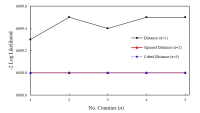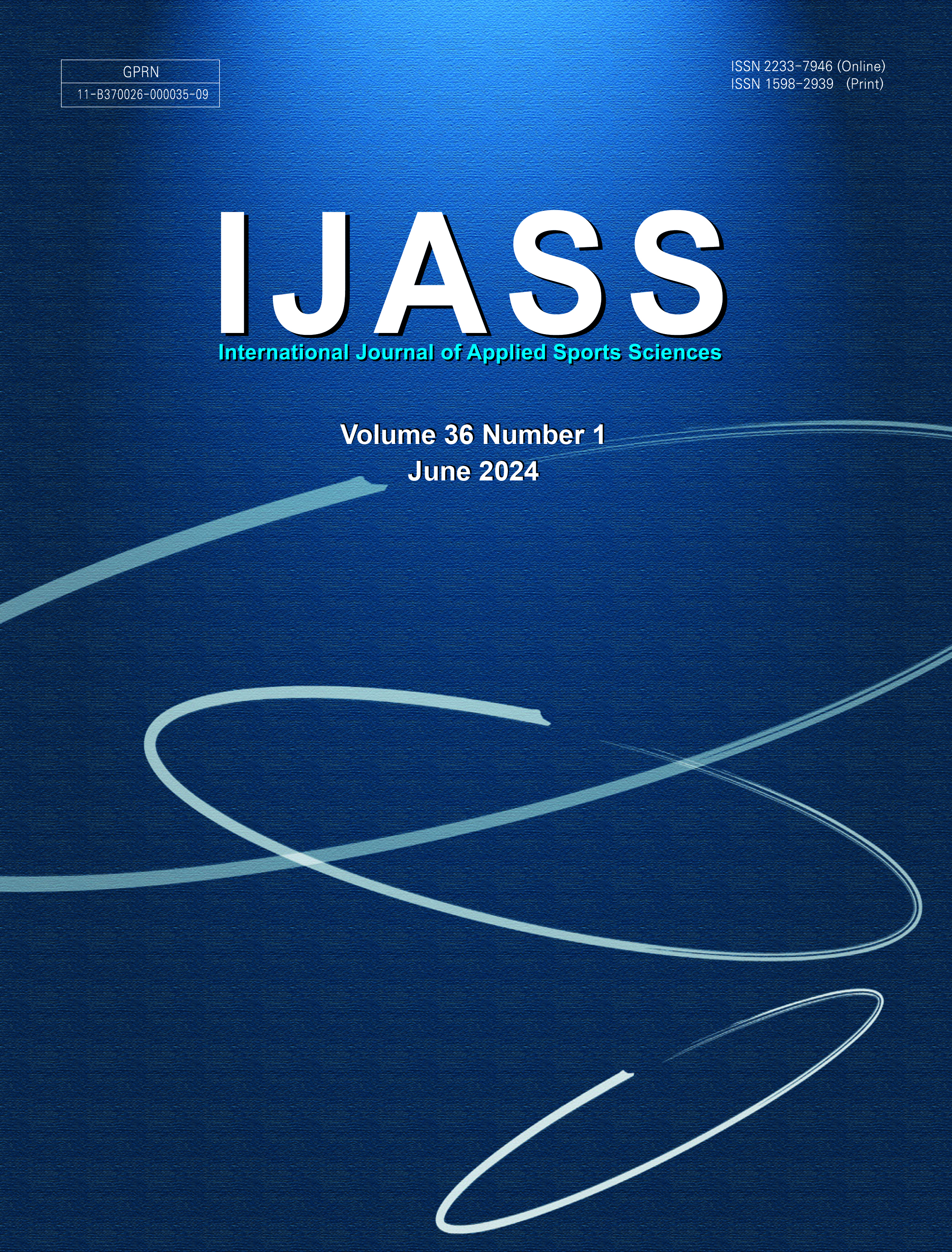 ISSN : 1598-2939
ISSN : 1598-2939
People might mythically believe sport affecting on social behavior positively, and that an intensive participation could provide better social behavior to youth and society. In addition, some people have propagandized the myth to promote the positive utilization of sport. However, the literature has not provided an agreed consensus as to sport participation increasing prosocial behaviors and reducing antisocial behaviors. Given that, the present study attempted to examine the conflicting issue between the literature. Therefore, the purpose of this study is to examine the effect of sport participation on prosocial and antisocial behavior in the comparison between the elite and the recreational. To achieve the purpose of this study, survey questionnaires were distributed, and 589 responses were analyzed using a factors analysis, a one-way MANOVA. The results were as followed. First, compared to most of the literature not specifying factors of prosocial and antisocial behaviors, the present study identified social behavior factors using an existing questionnaire. Second, there were differences in social behaviors between the elite sport participant and the recreational sport participant. Third, the recreational sport participation and the elite sport participation differ on prosocial behavior especially in high leadership, social facilitation, and high group cohesion. Fourth, the elite sport participant and the recreational sport participant have no significant difference on antisocial behaviors.
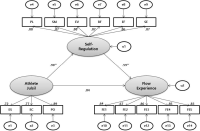
The purpose of this study was to explore the structural relationship among the perception of athlete Julsil, self-regulation, and flow of adolescent athletes. A total of 425 middle school and high school athletes completed a survey. Structural equation modeling analysis was conducted to verify the research model. The result of verifying the structural relationship among athlete Julsil, self-regulation and flow indicates that self-regulation was found to mediate the relationship between athlete Julsil and flow. In addition, measurement invariance was verified across gender and school that can be applied equally to various groups. Through these results, it was verified that athlete Julsil is an important psychological factor for adolescent athletes. In addition, they need to have a firm mental attitude by themselves and to move them to action for peak performance.

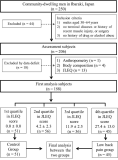
The purposes of this study were twofold: (a) to examine role of body mass index in incidence of low back pain and (b) to investigate more relevant causes of low back pain in body composition. Of the 250 initial subjects, 188 subjects were included for the first analysis and divided into quartiles based on the scores of Japan Low Back Pain Evaluation Questionnaire which was adopted to assess low back pain. We selected 51 subjects (body mass index: 27.4±5.0 kg/m2; age: 47.4±10.9 years) in 1st quartile as a control group and 45 subjects (body mass index: 27.1±2.8 kg/m2; age: 56.4±7.1 years) in 4th quartile as a low back pain group for the final analysis. Assessments of anthropometric characteristics and body composition (by whole-body dual-energy X-ray absorptiometry) were carried out and body composition was evaluated as absolute and relative values. No difference in body mass index between the two groups was detected and waist hip ratio and percentage of trunk fat mass per weight in low back pain group was significantly greater than those in the control group. While low back pain was significantly related to abdominal fat related variables including waist, waist hip ratio and percentage of trunk fat mass per weight, it was not linked to other variables such as weight and body mass index. Abdominal fat accumulation may be a potential risk factor for low back pain in adult men.

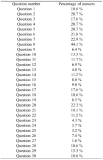

Background Cold application (e.g., lower-leg cooling: LLC) during halftime is becoming more popular in football matches. Therefore, we examined the effects of a 5-min halftime LLC (7.5±1.0℃; bare feet immersed up to the tibial tuberosity), as a recovery strategy on subsequent performance changes in the second-half. Methods Twenty male elite football players (age: 19±1 years; height: 176±6 cm; mass: 69±7 kg; athletic career: 9±1 years) participated in this crossover study (LLC or passive recovery: sitting on a bench without cooling). The 5-min FSP with a fixed intensity and distance, consisted of football-related activities (two trials of sprinting, jumping, dribbling, and kicking in various intensities and distances) and was repeated nine times (total 45-min) to mimic the first- and second-half of a football match. Calorie expenditure, heart rate, athletic performance, and passing accuracy were recorded. To determine feasibility, we compared our data to the normative values in previous reports. To test the condition effects over time, we performed a 2×6 mixed model analysis of variance for calorie expenditure and heart rate. For athletic performance and passing accuracy, we performed a 2×6 mixed model analysis of covariance (covariate: baseline measurement). Results There were no statistical differences between the LLC condition and passive recovery on athletic performance and passing accuracy at any time point (p>0.13 for all statistical tests). Recorded calorie expenditure (1,227±142kcal) and heart rate (163±11bpm) during our FSP were within the normative values of a typical football match (calorie expenditure: 1,200 to 1,500kcal; heart rate: 150 and 175bpm). Conclusions Since a 5-min halftime LLC (at 7.5℃) immersed up to the tibial tuberosity are not effective in delaying fatigue and passing accuracy, it is not recommended for a recovery strategy. Since simulated football matches using the FSP were similar to a typical football match in terms of calorie expenditure and heart rate, it could be used for future research or training purposes.

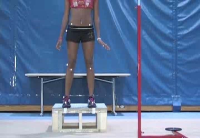
Knee joint valgus is often implicated as a hazardous position for the anterior cruciate ligament (ACL) and has been linked to ACL injury risk. Although several groups have previously examined racially diverse cohorts to determine if there are predispositions for injury, there is little evidence found that explore sex differences in valgus angles in African American athletes. The purpose of this study was to identify the difference of the knee valgus angles between African American male (AAM) and female (AAF) student-athletes. Eighty-five National Collegiate Athletic Association, Division II African American male (n=36) and female (n=49) student-athletes participated in this study. Subjects dropped directly down off a box and immediately performed a maximum vertical jump. Valgus and flexion angles were analyzed and calculated based on the relationship of the tangent for each image. Knee valgus angles were significantly different between AAM and AAF athletes both at initial contact and maximum valgus displacement (p<.05). Significant differences in knee flexion angle was observed with the AAM having greater Initial Contact knee flexion (p<.05). The current data indicates that sex differences, specifically increased knee valgus angles, exist during jumping and landing. Neuromuscular training programs should be designed to specifically address excessive valgus knee motion and improve landing knee flexion among these athletes.

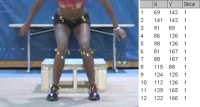
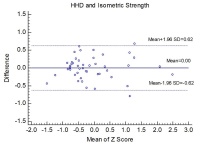
Purpose This study examined the accuracy and consistency of hand-held dynamometer (HHD) in assessing leg muscle strength in older adults. Methods Forty-eight elderly men and women (12 males and 36 females), aged 60-85 years, were recruited for this study. All study participants had anthropometric measurements, handgrip, the HHD, and isokinetic dynamometer tests. Pearson partial correlations were used to examine the validity of HHD compared with an isokinetic dynamometer after adjustment for age, sex, and race. Cronbach α coefficients were used to estimate the test-retest reliability of the HHD measurement. Results Age-, sex-, and race-adjusted partial Pearson correlation coefficients were 0.90 for isometric leg strength (p < 0.001), 0.62 for isokinetic leg strength (p < 0.001), and 0.63 for handgrip strength (p < 0.001) with the HHD. Cronbach α coefficients showed high interclass reliabilities in measuring leg muscle strength using the HHD in men (α=0.99) and women (α=0.96). Conclusions The HHD had good concurrent validity with high interclass reliability in assessing leg muscle strength in older adults.

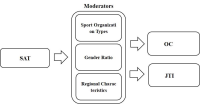
This meta-analytic review explores the relationships between job satisfaction, organizational commitment, and turnover intention in various sports organizations, in relation to moderating variables, including gender-ratios, types of sports organizations, and regional characteristics. Comprehensive Meta-Analysis (CMA) Version 2 was used to calculate the summary effect among the variables. Based on extracted correlation coefficients and standardized regression coefficients, we analyzed 85 effect sizes in 25,336 samples drawn from studies of sports organization employees and members. This study aims to better inform scholars and practitioners of ways to achieve higher levels of employee satisfaction and more positive organizational outcomes in sports settings.

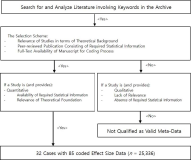
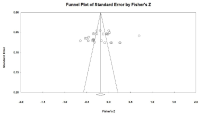
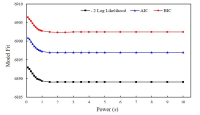
The location of a sports facility is one of the significant factors in economically operating and maintaining the facility. The present study used a location theory model to examine the influence of the Major League Baseball (MLB) stadium location on attendance (N=348) for the 2006-2017 MLB regular seasons, taking into consideration the population, median income, and distance between the stadium and the population center of counties nearby the stadium. The optimal location model was determined as the inverse proportion of the squared distance of the first nearest county, and location significantly influenced the attendance (p<.05). Then, based on the results of the location model, the current study analyzed the relationship between the MLB attendance and other attendance determinants by using hierarchical linear modeling. Among 14 different determinants, six variables (i.e., stadium capacity, ticket price, season, as well as the home team’s quality, payroll, and star players) were revealed in the findings to have a significant influence on the MLB attendance (p<.05).

